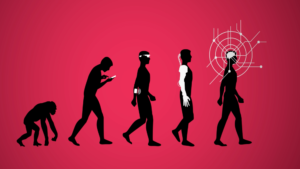Introduction: Bridging Seven Decades of Change
Have you ever wondered what it would be like to travel through time? Well, buckle up, because we’re about to embark on an exhilarating journey from 2023 back to 1954. These seven decades have witnessed some of the most transformative years in human history, shaping the world as we know it today. From technological revolutions to social upheavals, from cultural shifts to geopolitical realignments, this period has been nothing short of extraordinary.
The Dawn of the Digital Age

From ENIAC to AI: The Evolution of Computing
Remember when computers filled entire rooms? It’s hard to believe, but that’s exactly where we started. In 1954, the ENIAC (Electronic Numerical Integrator and Computer) was still considered cutting-edge technology. Fast forward to 2023, and we’re carrying supercomputers in our pockets! The journey from vacuum tubes to silicon chips, from punch cards to cloud computing, has been nothing short of miraculous.
The Internet Revolution: Connecting the World
Can you imagine a world without the internet? For those born in the 21st century, it’s practically inconceivable. Yet, in 1954, the concept of a global network connecting billions of people was pure science fiction. The birth of ARPANET in the late 1960s, the development of the World Wide Web in 1989, and the explosion of social media in the 2000s have fundamentally altered how we communicate, work, and live.
The Rise of Artificial Intelligence and Machine Learning
In 2023, AI will be everywhere – from our smartphones to our smart homes. But back in 1954, the field of AI was just taking its first baby steps. The journey from simple algorithms to deep learning neural networks capable of beating humans at complex games like Go is a testament to human ingenuity and perseverance.
Social and Cultural Transformations

The Civil Rights Movement: A Fight for Equality
1954 marked a pivotal moment in the fight for civil rights with the landmark Brown v. Board of Education decision. This ruling, which declared racial segregation in public schools unconstitutional, set the stage for the civil rights movement of the 1960s. Today, while we’ve made significant progress, the struggle for true equality continues.
The Women’s Liberation Movement: Breaking Glass Ceilings
From the right to vote to the right to work, women have fought hard for equality over the past seven decades. In 1954, the idea of a woman running a Fortune 500 company or running for president seemed far-fetched. Today, while challenges remain, women are breaking barriers in every field imaginable.
LGBTQ+ Rights: From Criminalization to Celebration
In 1954, same-sex relationships were criminalized in many parts of the world. The journey from those dark days to the legalization of same-sex marriage and the celebration of Pride parades in cities worldwide is a powerful reminder of how far we’ve come.
Geopolitical Shifts and Global Events

The Cold War and Its Aftermath
In 1954, the world was firmly in the grip of the Cold War. The threat of nuclear annihilation loomed large, and the Iron Curtain divided Europe. The fall of the Berlin Wall in 1989 and the subsequent collapse of the Soviet Union reshaped the global order in ways that continue to reverberate today.
The Space Race: From Sputnik to SpaceX
When the Soviet Union launched Sputnik in 1957, it kicked off a space race that would captivate the world for decades. From the moon landing in 1969 to the International Space Station and now to private companies like SpaceX aiming for Mars, our exploration of the final frontier has come a long way.
The Rise of China and the Shifting Global Balance
In 1954, China was a poor, largely agrarian society. Today, it’s the world’s second-largest economy and a global superpower. This shift has profound implications for international relations, trade, and the balance of power in the 21st century.
Environmental Challenges and Awareness

The Environmental Movement: From Silent Spring to Climate Strike
Rachel Carson’s “Silent Spring,” published in 1962, is often credited with launching the modern environmental movement. Since then, we’ve seen the establishment of Earth Day, the creation of environmental protection agencies, and most recently, global climate strikes led by young activists.
Climate Change: From Fringe Theory to Global Crisis
In 1954, the idea that human activities could significantly alter the Earth’s climate was barely on the radar. Today, climate change is recognized as one of the most pressing challenges facing humanity, driving everything from policy decisions to consumer choices.
Technological Innovations That Changed Everything

The Mobile Revolution: From Brick Phones to Smartphones
Remember those massive “brick” phones from the 1980s? They were a far cry from the sleek, powerful smartphones we carry today. This evolution has put the power of computing in our pockets, transforming how we communicate, work, and entertain ourselves.
Social Media: Reshaping Human Interaction
Facebook, Twitter, and Instagram – these platforms have become an integral part of our daily lives. But in 1954, the idea of sharing your thoughts and photos with millions of people at the touch of a button would have seemed like science fiction. Social media has revolutionized how we connect, but it’s also raised new challenges around privacy and mental health.
Biotechnology and Medicine: Extending and Improving Lives
From the discovery of DNA’s structure in 1953 to the development of mRNA vaccines in response to the COVID-19 pandemic, the past seven decades have seen incredible advances in biotechnology and medicine. We’ve eradicated diseases, extended lifespans, and are now on the cusp of personalized medicine tailored to our genetic makeup.
Conclusion: Reflecting on Seven Decades of Progress

As we look back on the journey from 1954 to 2023, it’s clear that we’ve lived through some of the most transformative years in human history. We’ve seen incredible technological advancements, fought for and won important social rights, and faced new global challenges. While we’ve made tremendous progress, many of the issues that concerned us in 1954 – inequality, environmental degradation, geopolitical tensions – continue to demand our attention today.
What will the next seven decades bring? If the past is any indication, we can expect even more rapid change and innovation. But as we face the challenges of the future, from climate change to artificial intelligence, let’s not forget the lessons of the past. The journey from 1954 to 2023 shows us that with determination, creativity, and cooperation, we can overcome seemingly insurmountable obstacles and create a better world for all.
For More Info Visit Here: Docoro.Shop.
FAQs about 2023-1954
What was the most significant technological advancement between 1954 and 2023?
While there have been many important advancements, the development of the internet and its widespread adoption has arguably had the most far-reaching impact on society.
How has life expectancy changed from 1954 to 2023?
Global life expectancy has increased significantly, from about 48 years in 1954 to over 72 years in 2023, thanks to advances in medicine, nutrition, and living conditions.
What was the biggest geopolitical shift during this period?
The end of the Cold War and the collapse of the Soviet Union in 1991 fundamentally reshaped the global political landscape.
How has the role of women in society changed since 1954?
Women have made significant strides in education, workforce participation, and political representation, although challenges to full equality persist.
What environmental changes have occurred between 1954 and 2023?
We’ve seen increased awareness of environmental issues, but also significant challenges like climate change, deforestation, and biodiversity loss.









